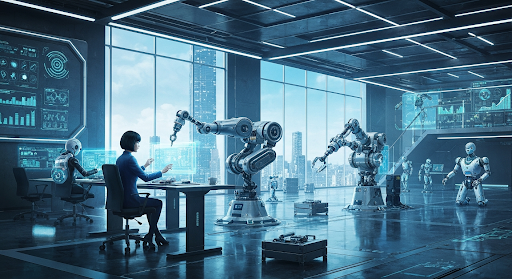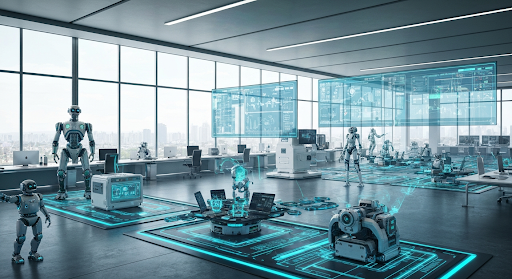Understanding the Benefits of Automatic Manufacturing System
Understanding the Benefits of Automatic Manufacturing System
What is an automatic manufacturing system and how does it work?
An automatic manufacturing system refers to the integration of machinery and software that automates production processes. It operates through programmable controls, enabling efficiency, precision, and reduced human intervention. These systems streamline operations by managing tasks like assembly, inspection, and packaging, ultimately enhancing productivity and minimizing errors in manufacturing.
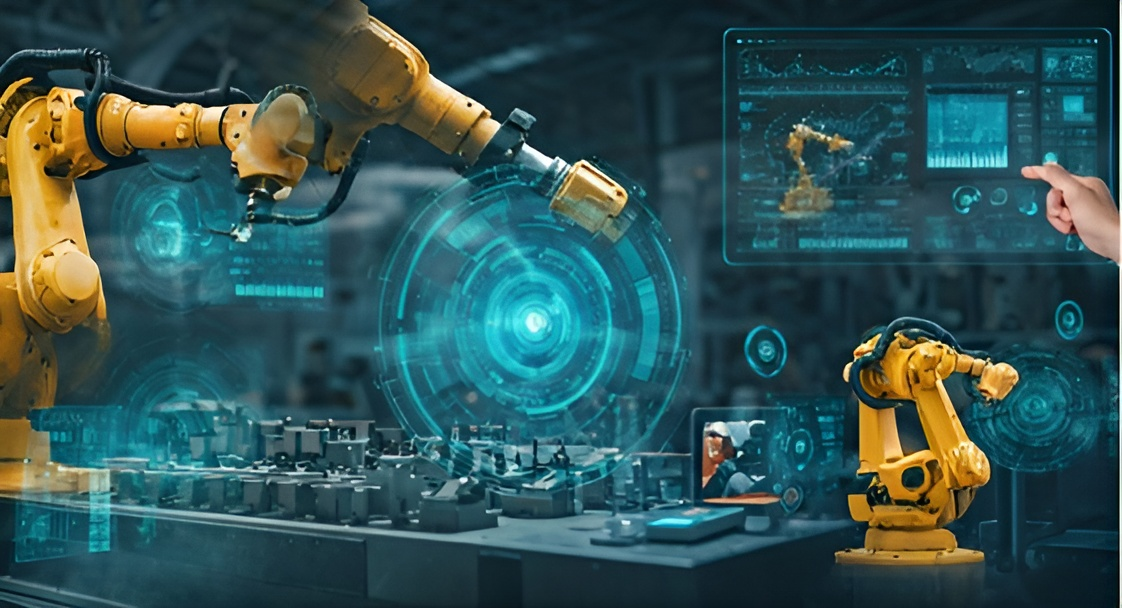
Key Highlights
- Automatic manufacturing systems integrate industrial robots, control systems, and machine tools to enhance the production process.
- Types of automation include fixed, programmable, and flexible automation, each with unique strengths for manufacturing systems.
- Cutting-edge process automation technologies like AI, vision systems, and the IoT power these systems.
- Major benefits include increased productivity, improved quality control, fewer workplace injuries, and cost savings.
- Industries from automotive to electronics and semiconductors extensively apply automated systems for precision and efficiency.
- Future trends include smart factories, green automation, and AI-driven process optimization.
Introduction
Manufacturing has changed fast because of industrial automation. This shift has changed how the production process works. Automation technology helps by doing much of the work for people. It makes the whole process faster and helps companies do more with less effort. The use of automation at work also cuts down on costs. When businesses use advanced control systems and other new tools, they get a big edge over their rivals. This is true for both small and big companies. If you want to keep up with today's production changes, you need to turn to automation. Here, we talk about how automatic manufacturing systems play a major role and why they still matter a lot in the world of making things.
Exploring the Future of Automatic Manufacturing Today
Defining Automatic Manufacturing Systems
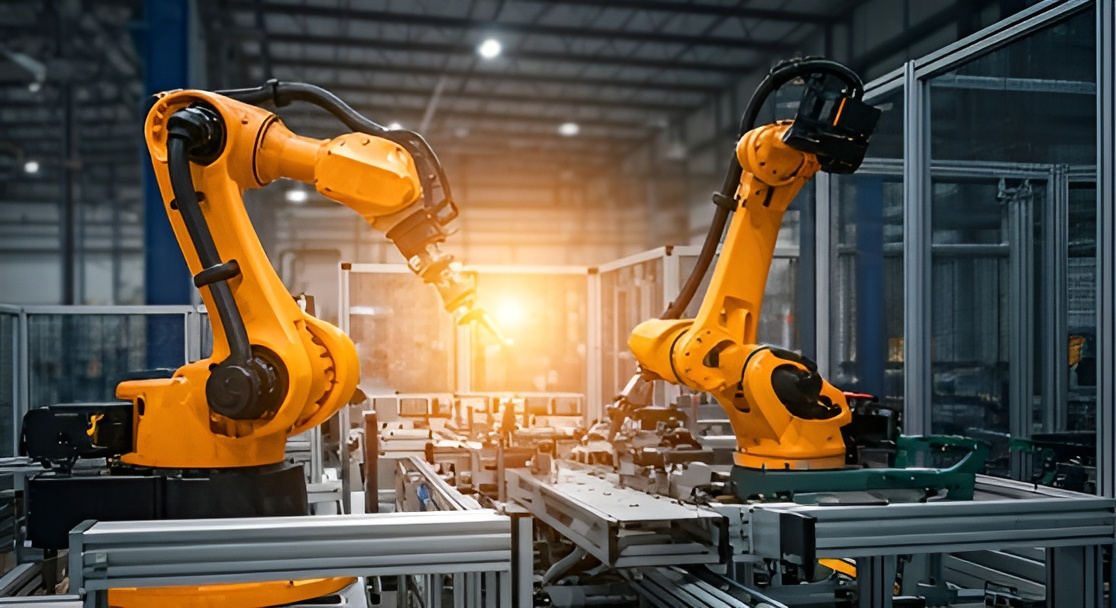
Automatic manufacturing systems are carefully set up to help or take over manual work by using automated processes. These systems work with control systems, industrial robots, and software systems. The goal is to make work smooth, with little need for people to step in. With this automation, the focus be on doing the job the same way every time and making it fast.
These automated systems help to cut down on human error. They also help speed up the production process. Whether the job is doing something again and again, or handling something tough, these systems show what industrial automation can do. In today’s world, they help make manufacturing smarter and run better than before.
Key Components of Automatic Manufacturing Systems
The way an automatic manufacturing system works well depends on how its different parts work together. Control systems be at the heart. They keep many processes moving at the same time. That lets the system be in sync. These control systems help run industrial robots and machine tools and help keep things on track.
Industrial robots have many jobs, like putting things together, welding, and moving materials from one place to another. Because of their speed and accuracy, they help make sure the whole manufacturing system does the same work every time, no matter how tricky the job is. Machine tools are important too. They help by bringing high levels of accuracy to the system and make everything work better.
Using vision systems and software systems helps make things even more automatic and smooth. Vision systems look at products to find problems and help do quality control right away. At the same time, strong software systems manage information from many machines and workers. They make sure all the data and steps in the production environment fit together. When all these things come together, the whole manufacturing system can work well, do its job quickly, and be reliable for all parts of the job.
How Automatic Manufacturing Systems Differ from Traditional Manufacturing
The modern manufacturing industry is seeing big changes. It is moving from old ways of making things to new automatic ways. In the past, people had to do a lot of work by hand. This made it easy for mistakes to happen and things to slow down. Now, with automation technology, factories use machines and systems that do much of the work. This cuts down on human error.
Repetitive tasks like putting things together or checking for quality used to take up a lot of time when done by people. These jobs were boring and slow. With automation technology, automated systems now do these tasks. They are faster and make fewer mistakes. Production goes up, and products come out looking the same every time.
Another big change is in how easy it is to adjust and keep up with what is needed. Old systems did not handle changes well. Automated systems use new tools that help them respond quickly. This shows that automation technology is now at the heart of the manufacturing industry.
Evolution and History of Automation in Manufacturing
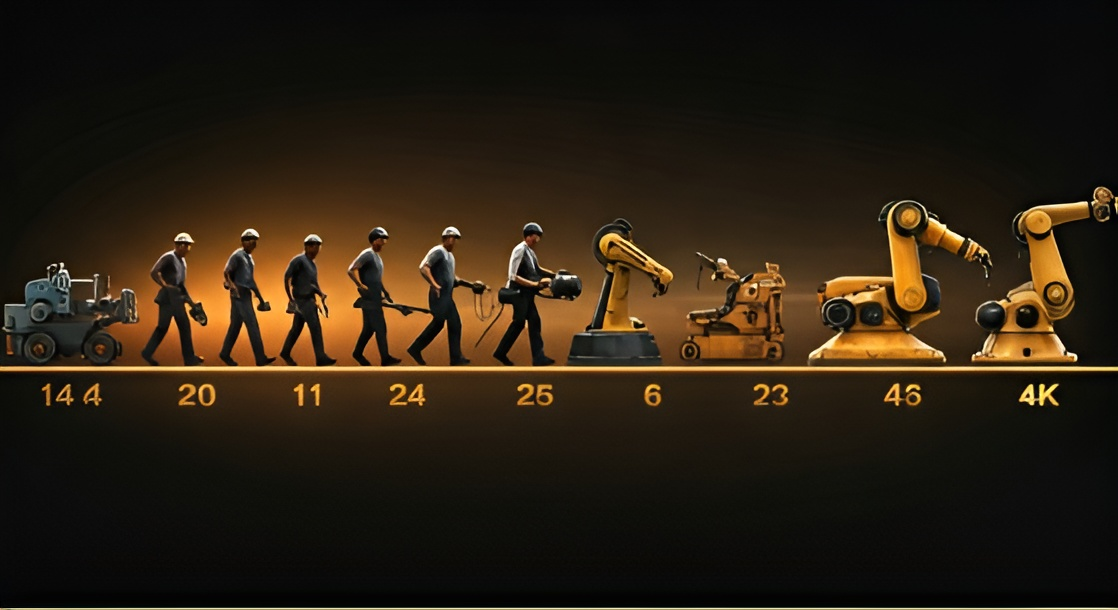
The path of automation in manufacturing processes starts from the time of the industrial revolutions. Back then, the use of steam engines began this change. Step by step, factories started using programmable automation. Each of these steps helped move industrial automation forward. At first, people handled most of the work on production lines by doing the same task again and again. Later, machines took over and made the work faster and easier.
Now, the modern production line shows all the changes that happened over the years. It works well with what we call Industry 4.0. This is the time when factories use things like IoT, artificial intelligence, and fully automated systems. These tools help to make manufacturing processes better and faster and bring in a new way of getting more done. Let’s look back at some of the most important things that happened on this journey.
Major Milestones in Automated Manufacturing
Over the years, automated manufacturing has moved forward through some big steps. These key points have changed the way businesses run.
| Milestone | Significance |
|---|---|
| CNC Machines (1950s) | Brought more precision to making things by using computer numerical control. |
| Unimate (1961) | The first factory robot began doing automated welding for car companies. |
| Digital Twins (2010s) | Made it possible to test with virtual models before doing tasks in the real world, which helped cut down risks. |
Each of these steps shows how automation boosts how work gets done, how dependable things are, and how well things run. As time goes on, technology keeps moving fast, and automated manufacturing builds on its early wins.
Impact of Industrial Revolutions on Automation
The industrial revolutions have played a big role in changing automation technology over the years. In the first revolution, people started to use machines for manufacturing, and this was the start of automated systems. As we moved into the second revolution, assembly lines were brought in. This helped make production more organized and structured.
When the third revolution came, programmable logic controllers changed how efficient the work could be. Early robots were also added to manufacturing processes at this time. Today, we are in what people call Industry 4.0. Now, smart factories are everywhere. They use real-time automation, AI, and IoT to make their business run better and faster.
All of this shows that every industrial revolution helps to push new ideas in the production environment. This always leads to smarter automation and a better way for people to work together with machines.
Types of Automatic Manufacturing Systems
Automation shows up in many different ways in the world of manufacturing. Every system gets built to meet certain production needs. The main types of automation are fixed automation, programmable automation, and flexible automation. These types use automation technology to make how things get made better and easier, based on how hard the job is and how big it needs to be.
Fixed automation works best when you have to make a very high number of items that do not change much. Programmable automation helps when you want to make products in batches. With flexible automation, you can change product design without any trouble. All these types of automation have an important part to play. They help to make your production faster and smoother. Let’s look at each of their special uses in more detail.
Fixed (Hard) Automation
Fixed automation, which is also called hard automation, is important for making work in the factory better. This type of automation uses special machines made to do the same jobs over and over. These jobs can be on an assembly line or in machining processes. The machines do not have much flexibility. It is the best choice for making a lot of items fast. You can also use it to cut down on human error and keep product quality the same every time.
With programmable logic controllers and machines that work together, this type of automation speeds up the entire production process. It helps manufacturers meet what the market wants on time. Fixed automation also helps you use control systems better to get the most work done.
Programmable Automation
Programmable automation gives a good mix of flexibility and consistency. It helps manufacturers make different products in batches. By using numerical control, the production process can change by simply reprogramming the machines.
This system is often used in places like frozen food production, where programmable logic controllers help manage things well. There may be some downtime when you change or set up the system, but being able to make different products is worth this.
This way, businesses can meet changing market needs and still keep their operations running smoothly.
Flexible Automation
Flexible automation is an upgrade to programmable automation. It cuts down on downtime by making changeovers automatic. This is useful in places where product design changes a lot. This kind of system needs flexible manufacturing systems, which run on smart software systems.
As one example, automated robotic arms can do many different tasks, like sanding and welding. These robotic arms can switch tasks quickly, so flexible automation lets you handle different tasks at the same time. You do not need to reprogram the system much, which is a big help.
Starting up a flexible automation system might cost more at first. But its good speed, quick changes, and less need for people to step in, make it a smart choice for places where things are always changing.
Core Technologies Enabling Automation
The backbone of automation is based on how we bring together advanced automation technology and process automation tools. It is this mix that helps bring all the manufacturing systems together. With it, you get easier operations and much better results.
These new developments, from industrial robots to vision systems and information technologies, help track production all the time. They help people make better choices, use less energy, and do things with more care. Some main tools behind this are industrial robots, machine vision systems, and the use of IoT-based solutions. These work together so every part of the process gets better. This is how the workplaces of today get smarter and more effective.
Robotics and Machine Vision
Bringing robotics and vision systems into an automatic manufacturing system helps to make production faster and more accurate. Robots with strong vision systems can do complex tasks. They give real-time feedback, so there is less human error. With this, quality control gets better across the entire production process. Machines can spot defects or changes at once.
Using programmable logic controllers in the production process means you can change settings and deal with different products on the line more easily. Mixing these technologies helps to build smarter factories and leads to new ways to work in manufacturing.
Industrial Internet of Things (IIoT) and Connectivity
The Internet of Things is changing how people see the manufacturing industry. By using this automation technology, machines, sensors, and control systems can talk to each other better. This helps real-time data get shared, so people in these companies can make smarter choices and have more smooth operations. Devices with IoT can watch over production steps, check on inventory, and use resources in the best way. This helps boost overall efficiency. With control systems and less chance for human error, companies can answer market needs faster. As they go for more connectivity, they find new opportunities for ideas and keep their competitive place in the manufacturing industry.
Key Benefits of Automatic Manufacturing Systems
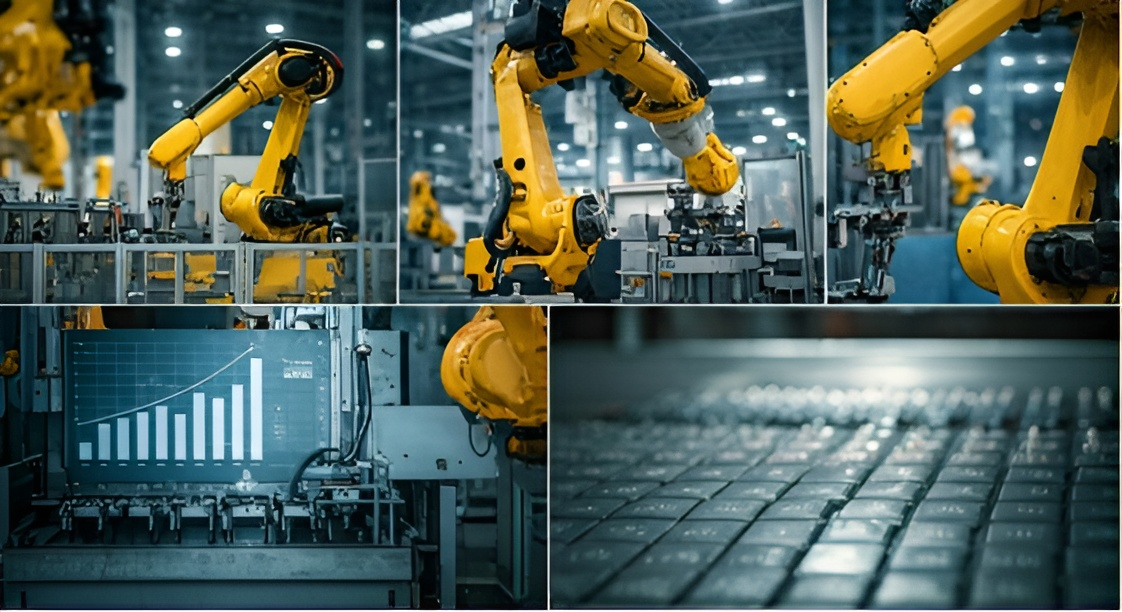
Automatic manufacturing systems help raise the way things work in production. These systems bring better ways to do tasks by using industrial robots and flexible automation. With these tools, many tasks can be done faster and with fewer mistakes from humans. This makes the work better for quality control and helps when making different products. Plus, the use of control systems and software makes inventory management easier because now there are ways to see data as it happens.
Manufacturers can look at this data and do better production planning. They get to know what is needed right away. So, they can be quick to change with market needs or when they make something new. This makes sure workflows stay good and that the whole process is about overall efficiency.
Increased Productivity and Efficiency
Making the production process smoother helps increase both productivity and how well things get done. Automated systems use control systems, like programmable logic controllers (PLCs), to keep track of the whole production line. These systems help cut down on human error and make sure the same tasks get done the right way every time. This means industrial robots and CNC machines can work at their best. Also, putting advanced analytics into automated systems helps with real-time choices. This pushes overall efficiency higher by letting businesses meet different product needs and keep up quality during the production process.
Improved Quality and Consistency
Improvements in quality and consistency are very important in the manufacturing industry today. By using control systems and industrial robots, companies can watch over every step of the work. This helps reduce human error and keeps the standards high. Automated manufacturing systems also make sure that the products are made the same way every time. This applies when making different tasks and on different production lines, so there are only very small changes between the items. When strong quality control is part of the production environment, companies get steady results that match strict rules. This helps build up the brand and make customers happier with what they get.
Cost Savings and Financial Advantages
By using automatic manufacturing systems, a business can save a lot of money and get big financial benefits. One of the main ways this happens is by cutting labor costs. These systems take care of repetitive tasks, so there is less need for people to do the same job over and over. They also help lower material waste by improving inventory management and quality control. This helps a company make the most out of what it has. When companies use less energy and work more efficiently, they can bring down their everyday running costs even more. With these savings, a business is able to spend money on new ideas and business growth. This helps them stay ahead in the manufacturing industry.
Reduced Labor Costs
Cutting labor costs is one big plus of using automatic manufacturing systems. When a company adds automation technology and programmable logic controllers, it keeps the production process running smoothly. There is less need for people to do the same repetitive tasks over and over. Because of this, the company does not need to depend so much on manual work. This means their payroll bills go down. It also cuts down on mistakes that can happen because of human error.
Using industrial robots and smart factories helps a company use its resources well. This pushes up overall efficiency. Now, workers can spend their time on complex tasks that need human skills and creativity instead of simple ones.
Lower Material Waste and Energy Consumption
The use of automatic manufacturing systems helps cut down on material waste and energy use. When people use control systems and programmable automation, they make the production process better. This means resources get used in a good way. Automated systems work in real time and can change fast, so errors go down and overall efficiency goes up. Because of this, companies spend less on extra material and support eco-friendly practices. These steps also help by cutting down the company’s carbon footprint. Better inventory management stops overproduction, so the manufacturing stays more sustainable.
Enhancing Workplace Safety and Employee Roles
The use of an automatic manufacturing system helps make the workplace safer. It does this by lowering the need for people to be in dangerous situations. When we let machines handle repetitive and complex tasks, there is less chance for human error. The latest technologies, like robots and vision systems, also help keep the production environment safe.
As these roles change, workers can learn new skills and do more important jobs. They may start to manage automated systems or watch over process automation work. This change can make people feel better about their jobs and lead to a workforce that is more creative and open to new ideas.
Reduction of Workplace Injuries
Putting fixed automation in place can help lower workplace injuries. When companies use programmable automation and machine tools, they let automated systems take over repetitive and risky jobs. This means people are less likely to make mistakes, since machines do that work instead. As a result, workers can spend their time on complex tasks that need human judgment and skill. With the use of strong safety controls, like vision systems and control systems, the production environment gets safer for everyone. These changes also help people follow rules at work and can cut down on accidents.
Upskilling and Changing Workforce Demands
A move to automatic manufacturing systems means people need to get better at using new tools and ways to work. It is important to help workers learn new things as their jobs change. Now, many have to know how to use complex systems like programmable logic controllers and industrial robots. This brings new opportunities for people to keep learning and growing in their jobs. When companies give good training, they build up their workers’ skills. This makes people feel more involved at work, and it can make overall efficiency better. If a business accepts these changes, their team will be ready to handle what modern production asks for.
Challenges and Considerations in Implementation
Setting up an automatic manufacturing system brings many challenges that organizations have to deal with carefully. The team must think about the control systems they already have and how tricky it can be to put new automation technologies in place with old setups. Sometimes, people in the company worry about what will happen to their jobs and may push back against these changes. The cost to buy new machines and software systems can be high, and this creates money problems for some. It is also important to set up good training programs, so workers can learn new skills. This helps make the change smoother and helps the automated systems work better in the manufacturing environment.
Common Barriers to Adoption
Putting an automatic manufacturing system in place often runs into some usual problems. The first is the high upfront cost needed for new equipment and technology. This can keep smaller businesses from investing in a manufacturing system. There is also a shortage of workers who know how to handle complex systems like programmable logic controllers and robots. This can slow things down. Another common issue is that people at the company might not want to change. Some worry they might lose their job because of automation. Others just do not want to learn all the new ways of doing things. To get past this, companies need to have good plans and spend time to help their workers learn new skills. This can help manage fears, support people, and make the change into automation go more smoothly.
Strategies for Successful Integration
A successful integration of an automatic manufacturing system needs many steps. First, it is important to give detailed training to all employees. This helps them learn how to use new technology like programming logic controllers and cnc machines well. Flexible automation plans also play a key role. They help you change production planning and manage inventory better, which saves time and keeps things running smoothly. Good, open communication between teams makes everyone work together more. This helps lower human error and lets things flow better. By checking manufacturing processes often and using data analytics, you can spot issues early. This helps the company move to advanced automation with fewer problems.
Real-World Applications in the United States
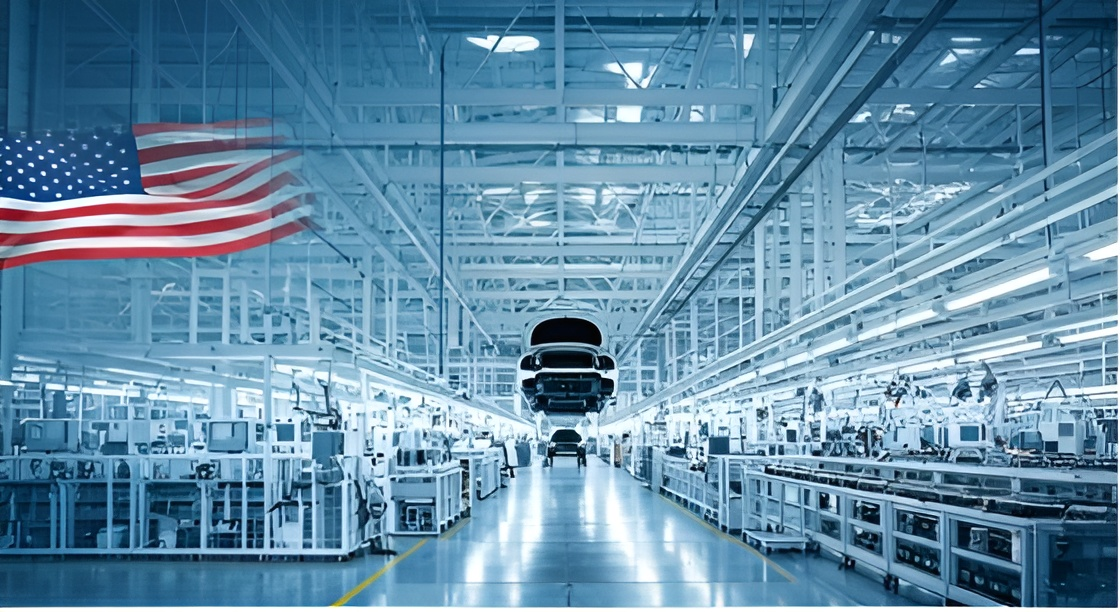
There are big changes in automatic manufacturing systems all across the United States. In the automotive industry, robotic arms and CNC machines help make assembly lines faster and better. This use of automation technology cuts down on human error and makes things more efficient. In electronics and semiconductor work, many companies now use vision systems and programmable logic controllers to keep manufacturing processes on track. There is also more focus on quality control and inventory management. These real-world tools and ideas help build smart factories. They give companies new opportunities to boost overall efficiency and improve what they do every day.
Automotive Manufacturing
In the automotive industry, fixed automation has a big role. It lets people use industrial robots and programmable logic controllers to put together many car parts with high accuracy. This setup helps to cut down on human error and boosts quality control in all parts of the work. When the right time comes, automation makes inventory management simple. It keeps parts available and speeds up the flow in the whole production environment.
Smart factories use vision systems for checking and cnc machines for detailed cutting and shaping. With these tools, the automotive industry keeps getting better, faster, and more flexible. These changes help make sure that every step in car making is focused on doing things well and getting good results.
Electronics and Semiconductor Production
Electronics and semiconductor production use a lot of hard automation. This helps with both overall efficiency and quality control. Companies rely on control systems like programmable logic controllers and vision systems to make things work better and faster. These systems also help cut down on human error.
When it comes to making circuit boards and parts, quality control is key. Hard automation helps to get the same great results every time. The use of robotics and CNC machines lets them do complex tasks more easily. This means less work is needed from people. Because of this, there are lower labor costs and better inventory management in the production environment. All these steps work together to boost output and keep up in this busy field.
Future Trends in Automatic Manufacturing
The field of automatic manufacturing is about to go through big changes because of new technology. Artificial intelligence will be very important. It will help improve control systems and let companies predict when machines need repairs. Also, when the internet of things gets used more, it will let machines share data right away. This will create smart factories with flexible manufacturing systems that can adjust fast.
As automation technology gets better, companies will focus more on being green. They want to create less waste and make their processes better. This focus will help their overall efficiency. These new technologies will also give people new ways to handle complex tasks in factories.
Artificial Intelligence and Machine Learning
Artificial intelligence and machine learning are changing how automated systems work in production. In smart factories, these tools help make manufacturing processes better by using real-time data and looking ahead at what may happen next. With the help of artificial intelligence, people can make stronger choices in things like inventory management and production planning. This helps cut down on human error. Machine learning lets systems get better over time as they learn from what happened before. This leads to better quality control and more work done in less time. When advanced computers and automated systems work together, they make the workplace more flexible, creative, and strong.
Sustainable and Green Automation Solutions
Sustainable and green automation solutions are changing how the manufacturing industry works. These methods bring eco-friendly steps into the way products are made. Using energy-saving technologies like automated systems with renewable energy helps lower the carbon footprint. This is good for both the Earth and people.
Using tools for process automation and smart inventory management also cuts down on waste. This means there is less thrown out, which saves money and is better for the planet. Smart factories that use robotics and artificial intelligence make work run smoother. They help companies be both efficient and thoughtful about the environment.
The use of these solutions gives the manufacturing industry new opportunities. These businesses can help with sustainable growth and still stay up to date in a quickly changing market.
Conclusion
Automatic manufacturing systems have changed the manufacturing industry in a big way. These systems use automation technology and control systems to make hard tasks simpler and lift overall efficiency at work. When businesses use the new control systems, they can cut down on labor costs and lower mistakes made by people. This helps things run smoother day to day. The effect of these systems is not just about making more products. They also let workers try new ideas in product design and help companies adapt faster to changes. As more companies in the manufacturing industry turn to automation, they can see there is more money to be made and ways to keep work steady for the years to come. This opens up a new future where everything in manufacturing works better for all of us.
Frequently Asked Questions
What industries benefit most from automatic manufacturing systems?
Industries like automotive, electronics, and pharmaceuticals use automatic manufacturing systems. These businesses use automation to make their work faster and better. It helps them keep the quality steady, and they can lower labor costs. With this, they get more done and it also helps them keep up with changes in the market.
Are jobs at risk due to automation in manufacturing?
Automation can help things move faster in manufacturing. But it can also be risky for some jobs, especially the ones that have people doing repetitive tasks. Even so, this change can make room for new jobs. Some people will need to manage advanced technology. Others will work on helping employees learn new skills for the future in this industry.
How does automation affect product quality?
Automation helps make products better. It does this by keeping the manufacturing processes the same each time. There is less chance for a human error to happen. You also get more control over how things are made. This means there will be fewer mistakes. Products will match the needed details, and be more reliable. Because of this, customers are happier with what they get.
What is the typical ROI for automated manufacturing systems?
The usual ROI for automated manufacturing systems can be different for each company. Many companies say they see a return of about 20-30% in the first few years. Things that affect the ROI are the amount you pay at first, how much more you can get done, and lower running costs. All of this makes automation a good money choice for those in manufacturing.
How can small manufacturers get started with automation?
Small manufacturers can begin using automated systems by looking at what they need first. They should find which work to automate and start with that. They can slowly bring in new tools, like fixed machines or robots, to help. Training their team and getting help from experts can make the move to automated systems much easier for everyone.

